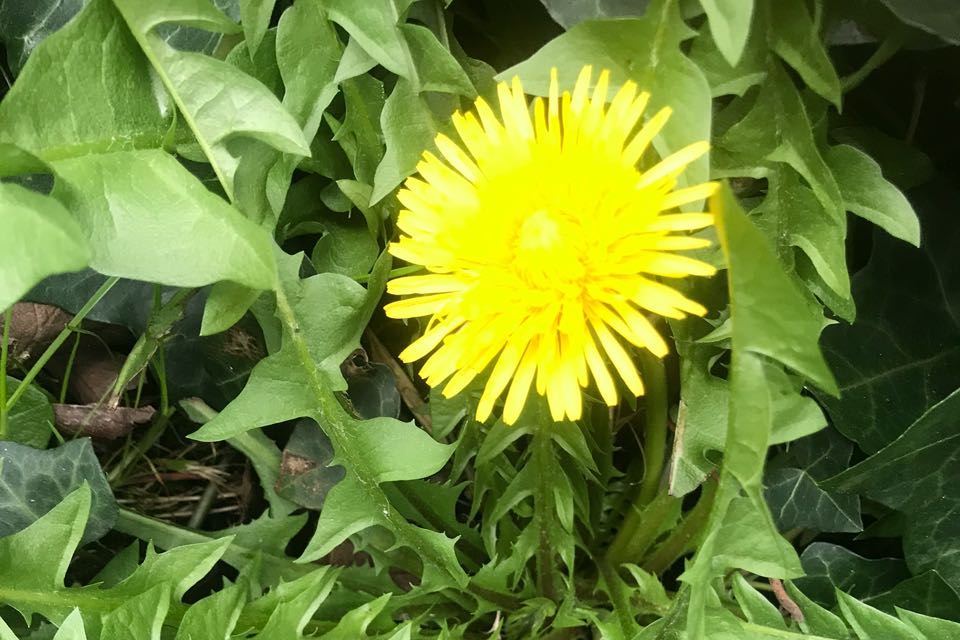By Wendy Paton, Founder, London Bushcraft
Being in self-isolation has been difficult for us all, but for me personally, connecting with nature has been my saviour!
If working from home combined with home schooling has caused your stress levels to rise, connecting with nature can be very therapeutic.
Foraging is a great place to start to increase your connection with nature.
Below are 14 spring plants that are relatively easy to identify. This might be on your daily exercise walks or plants to look for in your garden.
Remember that you need to identify plants 100% before consuming anything. As this article is an introduction to these plants you need to cross reference with other sources (books, internet etc) to make sure you have correctly identified anything you are eating.
Please also see my safe foraging tips blog: https://www.londonbushcraft.com/post/tips-for-foraging-safely
FORAGE SAFELY DURING CLOVID-19
Please obey guidance around social distancing while foraging on your daily exercise. Anything you would like to consume, pick where there is a limited amount of foot traffic like your garden or a secluded wild area you know of. Wash plants well and to take extra precaution, cook foraged ingredients during this period as well.
Sweet Violet (Viola odorata) is a small creeping plant that has heart shaped leaves. It has small blue-violet or white flowers between March- May. The leaves are broad and glossy with rounded teeth and are smooth which grow from a central tuft. Eat the flowers and young leaves, raw or cooked. This is my new favorite plant as I have discovered the leaves make a great substitute for parsley or lettuce! Harvesting the sweet violet when it is flowering will help identification. With a long history of use in Europe in the past, it was recommended for bronchitis and a dry hacking cough.
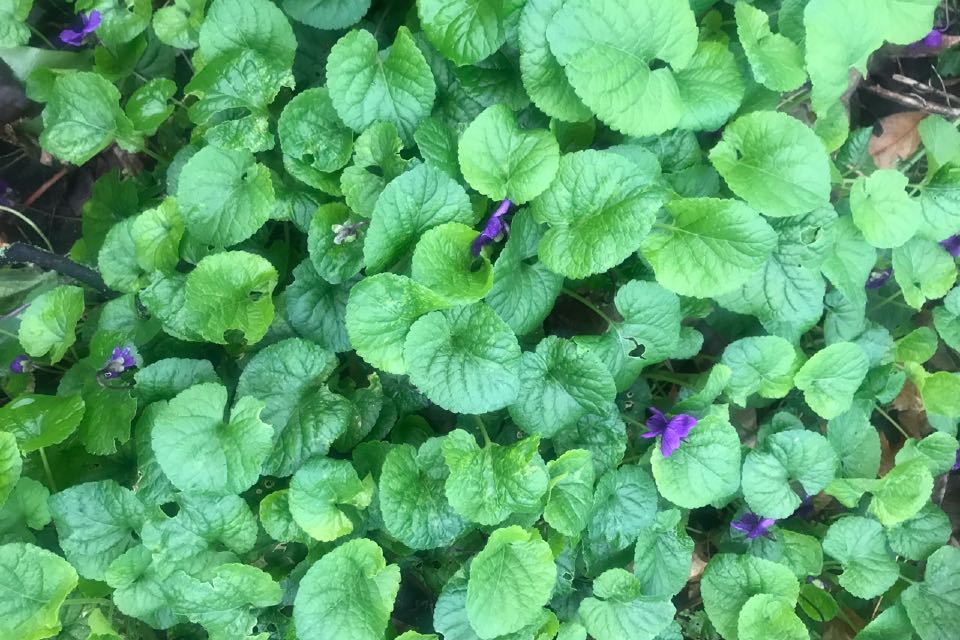
Yarrow (Achillea millefolium) is a small plant and its leaves have a feathery appearance. The young leaves and flowers of yarrow are used in salads or to make a tea, fresh or dried. Yarrow is used in herbal medicine with its varied healing benefits, including being used for fever and the common cold and helping to stop bleeding from cuts and wounds. Do not eat when pregnant as it may cause miscarriage.

Jack by the hedge also known as garlic mustard (Alliaria petiolata) is a small plant and the leaves can be found as early as February, with a second crop appearing in September. It smells of garlic when crushed although it is slightly bitter. It has small white flowers from April- June. It is rich in Vitamin A & C, the fresh leaves are great cooked or added to salads and pesto but due to the bitter taste, add in small quantities and use with other herbs. See our Spring Pesto recipe for inspiration https://www.londonbushcraft.com/post/spring-pesto
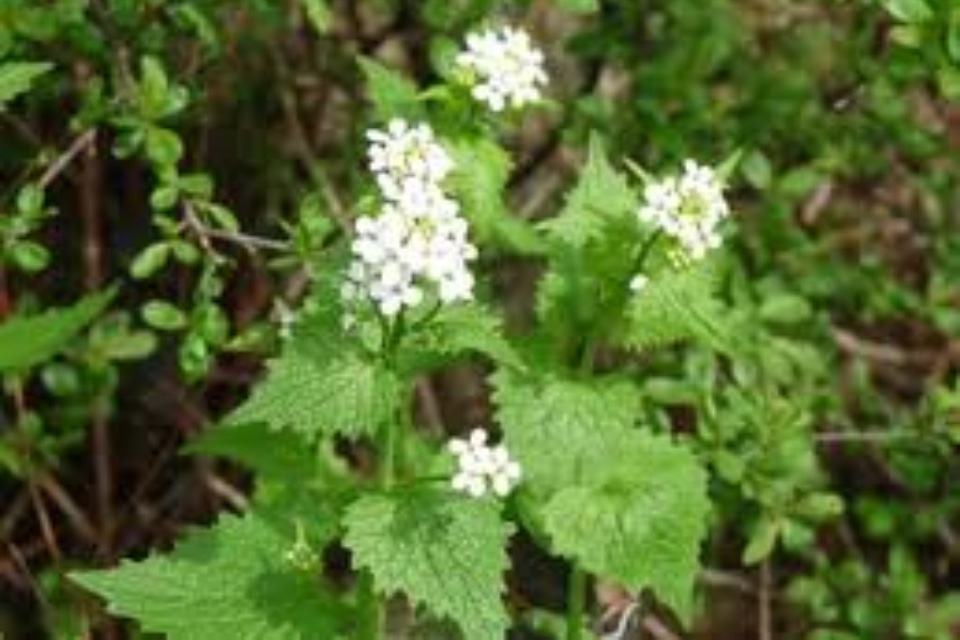
White dead nettle (Lamium album) looks similar to a stinging nettle but it has larger white flowers and as a dead nettle, it does not sting you. Although called a nettle, it is actually in the mint family. One way to identify plants in the mint family is by the square shaped stem. The young leaves can be cooked like spinach, used in salads or the flowers made into a tea infusion. The leaves are a good source of vitamin A. Beginners are advised to wait till the plant is in flower before harvesting to help with identification. Not enough is known about interaction in pregnancy, so best to avoid.
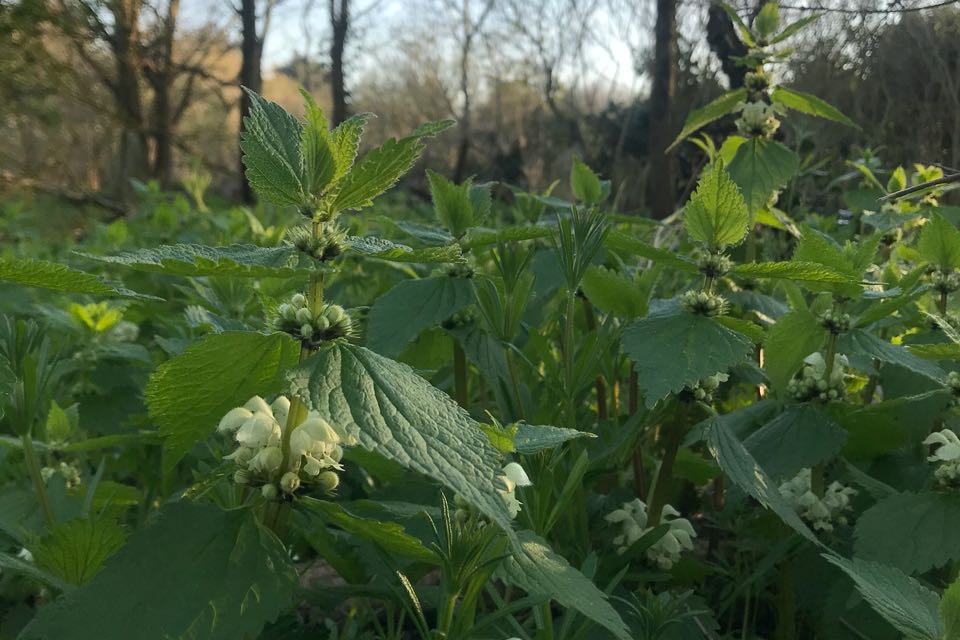
Common mallow (Malva syvestris) is a small spreading plant. It has purple flowers in the spring and summer. When cooked, the leaves can be used to thicken soups and stews as the leaves create a mucus very similar to okra. You can also cook it as you would spinach. In Egypt the leaves are used to make a famous soup, melokhia.
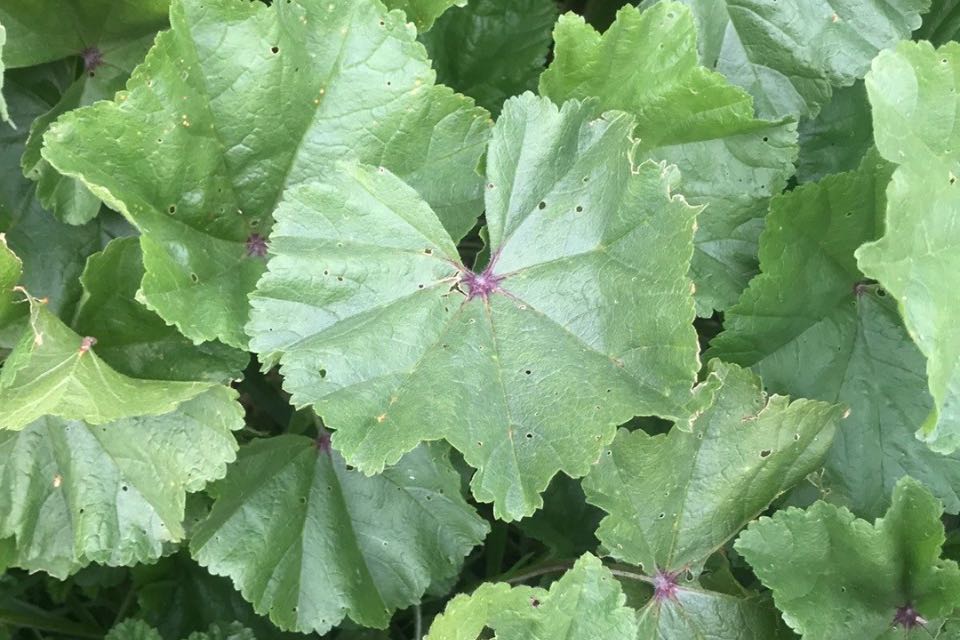
Hawthorn (Crataegus monogyna) is a small tree with large thorns. The new leaves can be eaten in spring and the berries eaten in autumn. Hawthorn is used to make medicine for diseases of the heart, however do not eat any part of this plant if you are using pharmaceutical heart medicine as it can amplify medication causing problems.
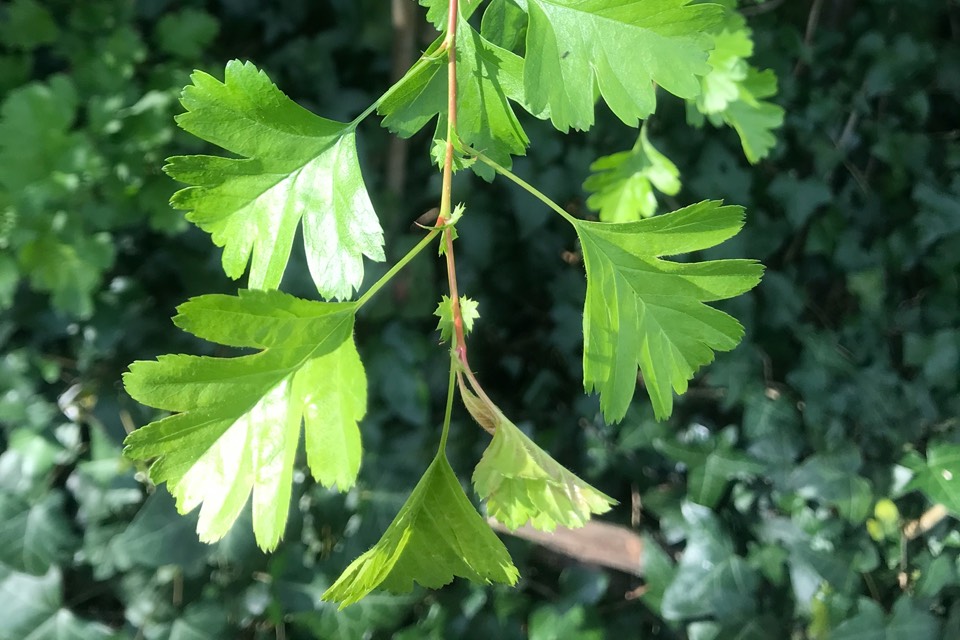
Purple dead nettle (Lamium purpureum) It is also known as red dead nettle. Although called a nettle, it is actually in the mint family and has a square stem as all plants in the mint family. As it’s not actually a nettle, it does not sting you. The leaves are edible, with the purple tops being even a little sweet. Use them in soups, salads or any other way you would use any other green. You can also use as a herb and garnish meals or add it to a homemade wild green pesto. The leaves can be used on external wounds or cuts as it is anti-inflammatory and anti-bacterial. Beginners should wait till dead nettle flowers before harvesting to help with identification.
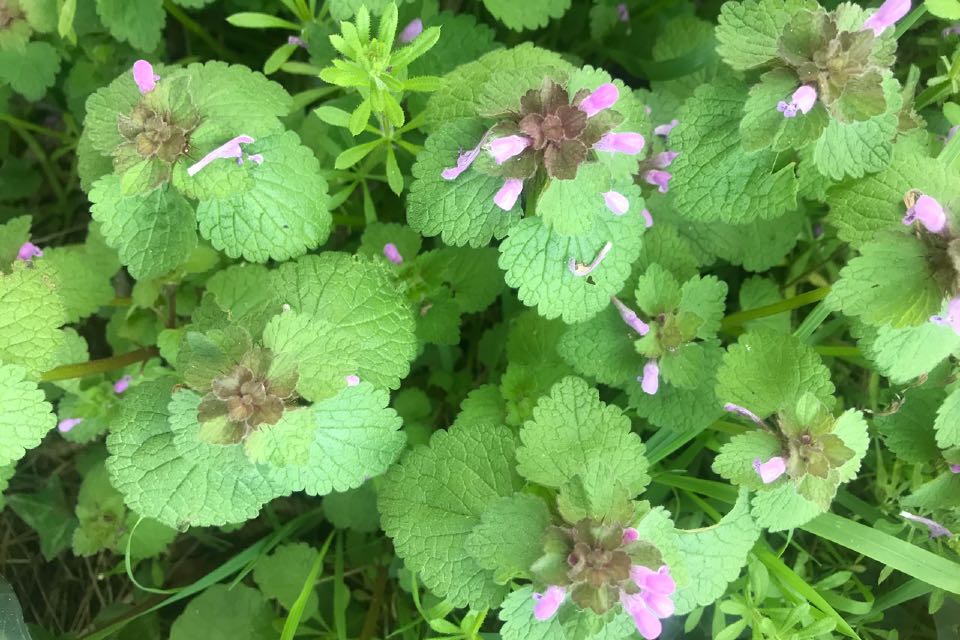
Ribwort Plantain (Plantago lanceolata) is a small plant and considered a weed by many. You can eat the new young leaves in spring. In Poland it is called “Grandmother’s plaster” as she used it on her grandchildren to stop bleeding on small cuts. The leaves are better eaten young in the spring as the leaves become very stringy.
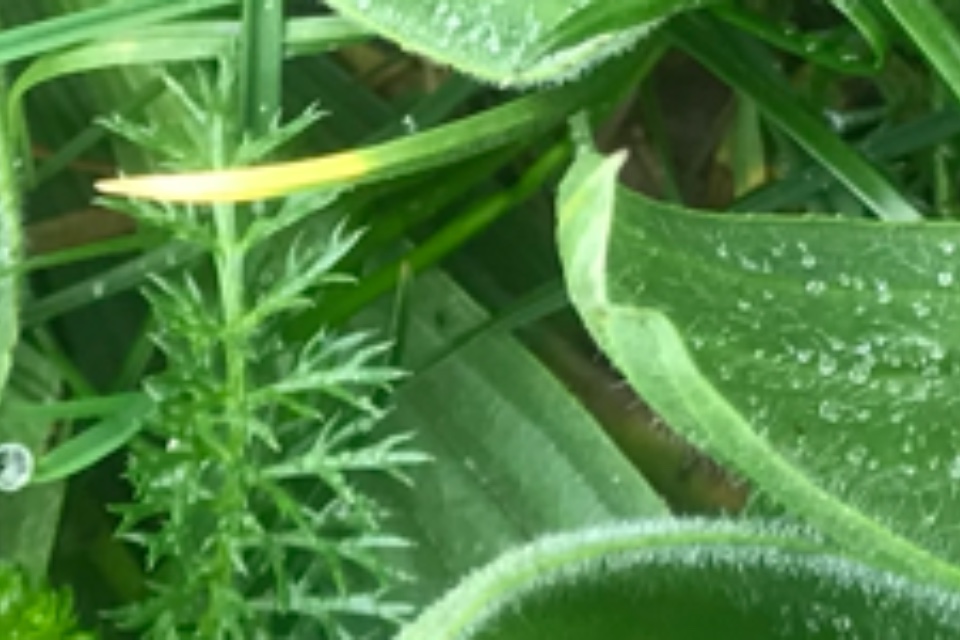
Dandelion (Taraxacum officinale) is a common garden weed but you can eat its leaves cooked or raw. You can also roast its roots and make something that tastes like coffee. The roots can also be used as a vegetable.You can make a pesto from its leaves. The leaves can be found at almost any time of the year except at the very coldest time. The flowers can be also eaten but remove the green sepals underneath the flower. The petals can be added to salads of used to make a light syrup with honey or sugar. For more facts about dandelion please see https://www.londonbushcraft.com/post/dandelion

Salad Burnet (Sanguisorba minor) is a small herb that smells and tastes of cucumber. You can add the leaves to salads. A tea was made from salad burnet and was drunk by soldiers prior to going into battle in the hope that any wounds received would be less severe. The leaves are known to be helpful in treating issues related to gastro-intestinal tract including the treatment of diarrhea.
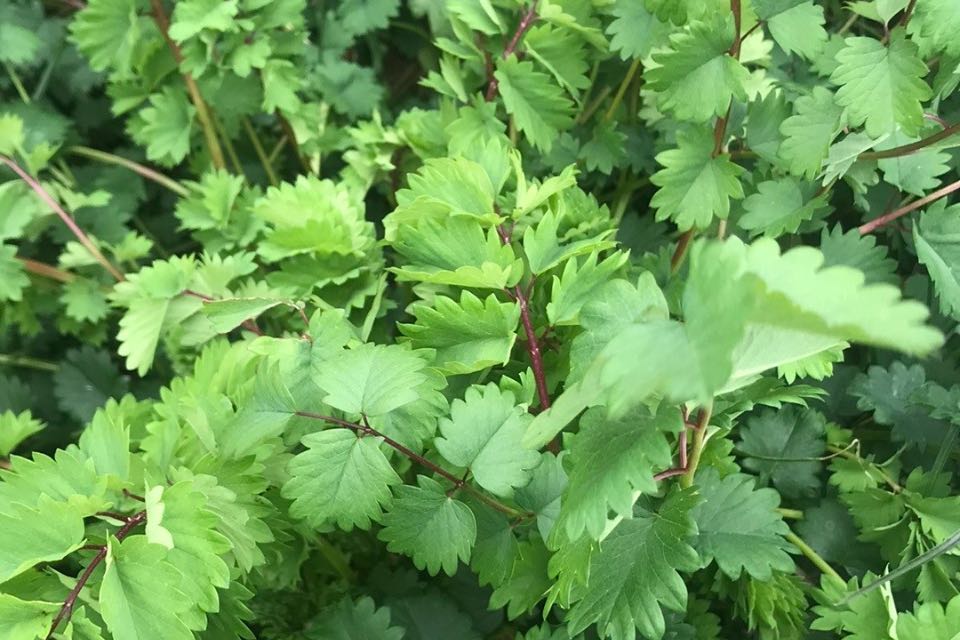
Stinging Nettles (Urtica dioica) are painful to touch as they inject some chemicals into you to protect it. But you can eat stinging nettles when you cook them as this gets rid of the sting. It makes a healthy tea, soup or cook it like spinach. It has high levels of vitamins A and C, 2.3% by weight of iron and a remarkable 5.5% of protein. You use the young nettle tops which are best from late February to early June. See also our Spring Pesto recipe: https://www.londonbushcraft.com/post/spring-pesto
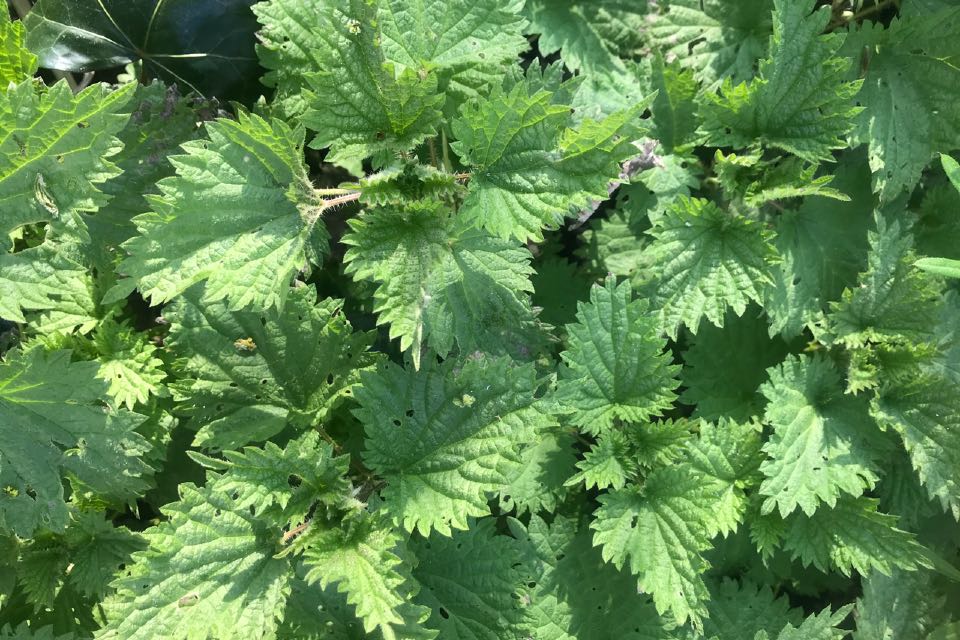
Cleavers or Goosegrass (Galium aparine) is a very sticky green plant, caused from the hook-like bristles covering the stems. But after you boil it the hooks lose their sharpness and they are fine to eat. It is used in herbal medicine and one of the properties is clearing the lymphatic system. You can also make a healthy cold infusion by leaving it in cold water overnight, strain it the next day and drink the refreshing water.
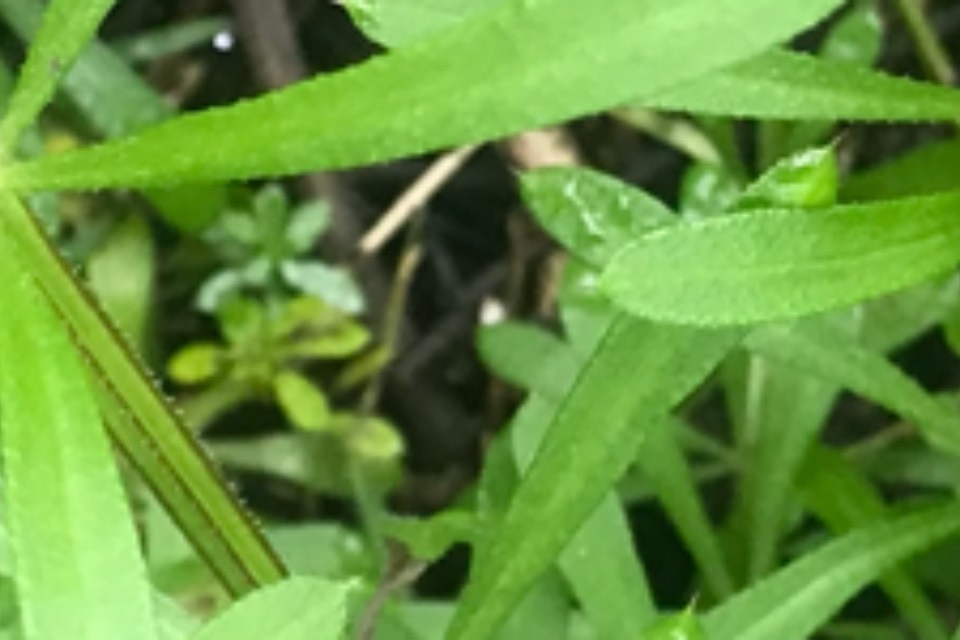
Burdock (Arctium minus) is a weed with large heart shaped leaves, which resemble rhubarb. The taproot of the young plant can eaten as a root vegetable and the root was also used in beerbefore the widespread use of hops. In the early 1940’s a Swiss inventor studied the way the sticky seeds attached themselves to clothes. The result of his studies was the creation of Velcro. It is recommended to avoid during pregnancy.
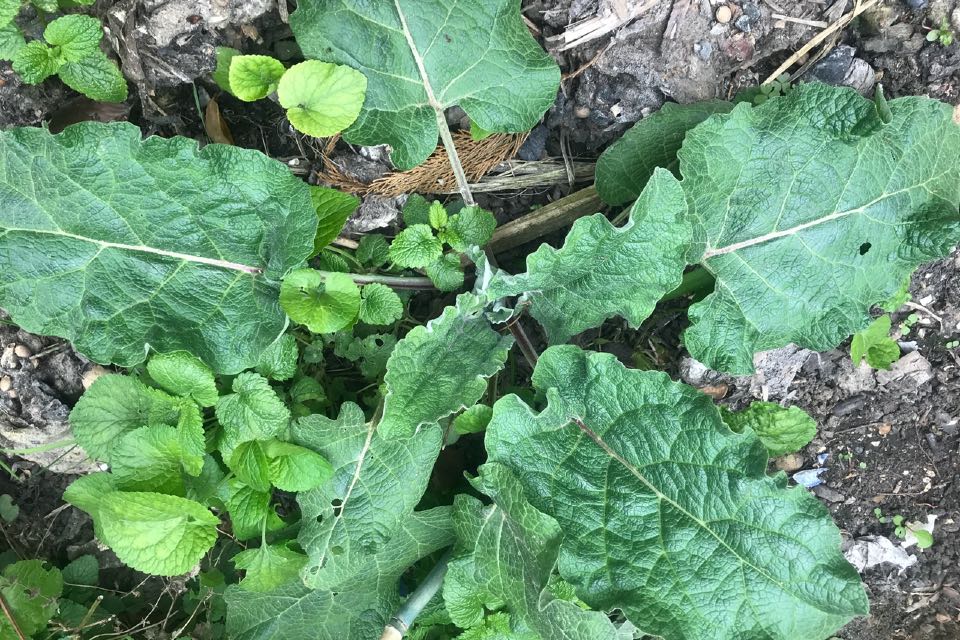
Blackberry (Rubus fruticosus) is a prickly shrub with thorns. There are at least 400 micro species of blackberries. Aside from the well-loved blackberry, the new leaves appearing in spring can be used in the treatment of diarrhoea, while the flowers can be used in the treatment of constipation. Boil up the leaves or flowers to make a tea infusion.

London Bushcraft services during lockdown:
- If you would like 1:1 video tuition to help identify these plants, London Bushcraft is offering this service during the COVID-19 pandemic. Please contact office@londonbushcraft.com for more information.
- London Bushcraft is offering an online educational, fun and interactive programme for children. Companies can sign up for group bookings for their employees’ children to support them while home schooling and working from home or individual parents can sign up their children. For more information:
Website: https://www.londonbushcraft.com/online-bushcraft-courses
Email: office@londonbushcraft.com





